Large, Fast Growing, Beautiful
by Phil Bergman
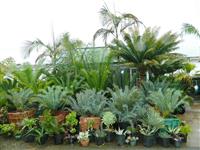
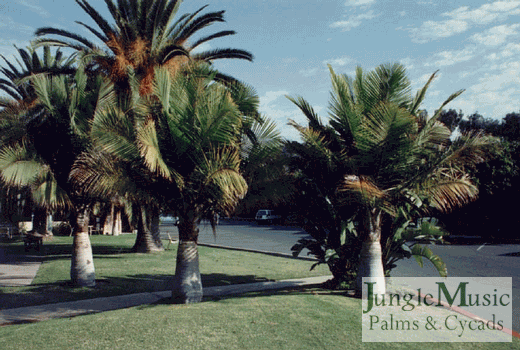

A FAST GROWING, SINGLE TRUNK, LARGER GREEN PINNATE PALM FROM MADAGASCAR
ABOUT THIS ARTICLE:
THE MAJESTY PALM, RAVENEA RIVULARIS, IS NATIVE TO THE ISLAND OF MADAGASCAR. IN HABITAT IT LIVES IN MOIST AREAS LIKE RIVER BANKS AND HUMID VALLEYS. IT WAS INTRODUCED INTO THE NURSERY MARKET IN THE 1980’S. WELL GROWN, THIS PLANT CAN GROW TO OVER FIFTY FEET WITH A VERY WIDE BASE NEAR THE GROUND. THE TRUNK GRADUALLY TAPERS TOWARD THE TOP WITH A FULL CROWN OF GREEN LEAVES OVERHEAD. GROWTH RATE IS FAST. INFORMATION BELOW DESCRIBES THIS PALM SPECIES.
Introduction
About twenty years ago this palm species from Madagascar was quite popular. Some said it was “the palm of the future”. The species is large and stately. But, because of cultural difficulties, this did not prove to be the case. The plant sort of fell out of favor despite being a large and fast growing palm. However, when grown well, it is an attractive and beautiful large palm with a thick base. Grown poorly, it tends to be yellow and not do well. The cultural difficulty is that it wants good drainage, adequate water and plenty of fertilizer. If you provide these things, it’s a piece of cake to grow. Lacking nitrogen, it turns yellow. So, if you have one or get one, realize that it has to be fed on a regular basis. With proper care, it is a desirable and attractive palm.
DESCRIPTION OF THE MAJESTY PALM, RAVENEA RIVULARIS
Common Names:
The Majesty Palm
Type of Plant:
This is a single trunk palm species with no crown shaft.
The Genus:
It belongs to the genus Ravenea which has about twenty individual species native to Madagascar, the Comoros and possibly some other nearby islands.
Sun Tolerance:
This species prefers full sun along the coast but does quite well in half day sun. Far inland areas would require only part day sun or very bright filtered light.
Cold Tolerance:
This species takes temperatures into the mid-twenties. Below this poses a risk. The chances are, if you can grow a King Palm, you can grow this species.
Mature Height:
In habitat, some individual plants are over fifty feet tall. There are reports of trees over sixty feet tall. It’s not altogether clear how tall this species gets mature in our locality (no mature trees as of yet) but our estimates are a similar height.
Leaves:
The leaves are of the pinnate type, rather flat in cross section and six to eight feet long with a short bare petiole. Leaves are minimally arched if at all and lower leaves will hang dependently when old.
Leaf Stem:
There is a short bare petiole and there is no armor or barbs on the leaves
Leaf Color:
Leaf color in green. Leaves are not glaucous (silver color). Leaf stems are tan to light brown.
Trunk:
The trunk is fattest at it’s base and tapers as one looks upward. The trunk diameter right below the leaves is the thinnest part of the trunk. There may be some bulging in the mid-trunk. The base of some domestically grown plants in our area can be over 30 inches thick.
Suckers:
This species does not produce suckers. It only has one trunk.
Cold Tolerance:
This species tolerates temperatures into the mid-twenties. Absolute cold tolerance is probably a few degrees cooler than this.
Fruit:
Mature fruit is red in color and about 1/3 on an inch in size. The seed is smaller than this and tan in color. Large fruits are produced by a single tree. But, it is dioecious, so a male and female plant are needed in the same area to produce viable seeds.
Growth Rate:
Medium to fast, particularly with good culture.
Native Habitat:
Moist or humid along river beds and in valleys in Madagascar. These areas see good rainfall.
Landscape Usages:
This species should be given plenty of space to grow and demands good culture. Most people plant it as a single specimen because of its mature size. From a nursery plant, in five to ten years somewhat should have a plant that is ten to fifteen feet tall.
Peculiarities of This Species:
For some unclear reason, the Majesty Palm does very poorly close to the ocean. It may be due to the salty air. In time one sees crown rot and decline of the plant. In all areas, plants that don’t get adequate water languish and look bad. If there’s a lack of or shortage of the proper fertilizer, plants will turn yellow or a “bleached out”. (see photo below). This responds to ample nitrogen (i.e. blood meal) applications.
Usage as a House Plant:
When it became clear that the Majesty Palm was not the easiest palm to grow outdoors, nurserymen who wanted a quick growing plant began marketing it as an interior plant or house plant. Such growers had too much invested in their efforts and had to sell to someone. Unfortunately it is a very mediocre house plant and there’s much better species for interior usage.
See photographic representation of this species and nursery plants below.
PHOTOS OF THE MAJESTY PALM, RAVENEA RIVULARIS
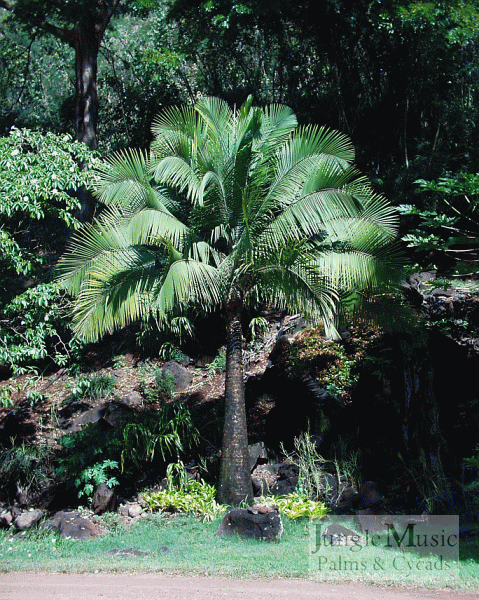
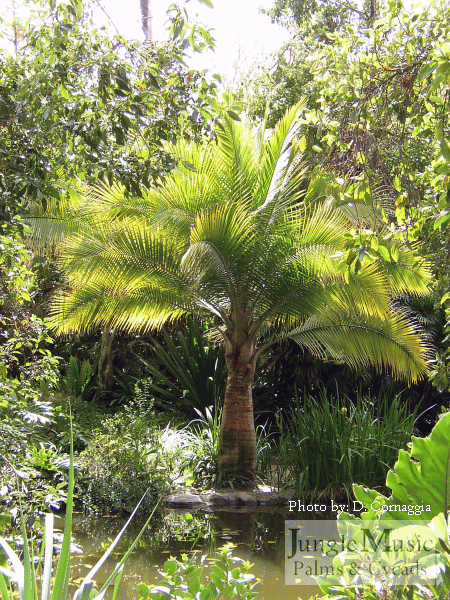
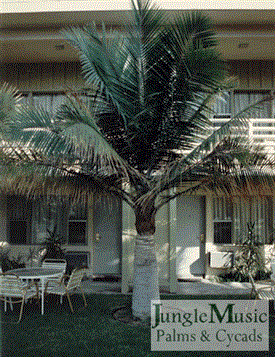
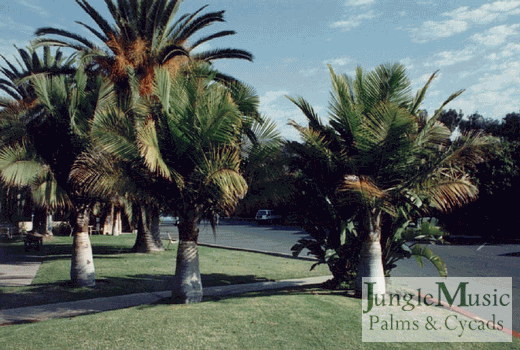
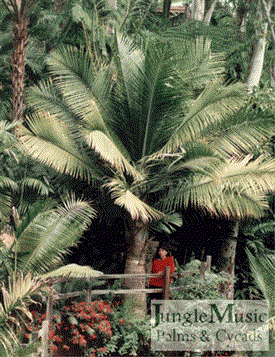

PHOTOS OF THE MAJESTY PALM IN HABITAT (by M.R.)
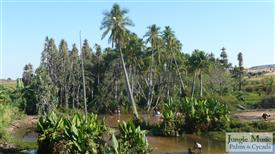
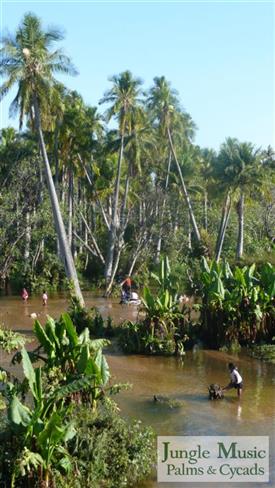
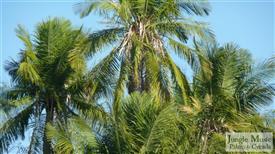
MAJESTY PALM TREES AT THE NURSERY
Availability can change over time. Representative pictures shown.
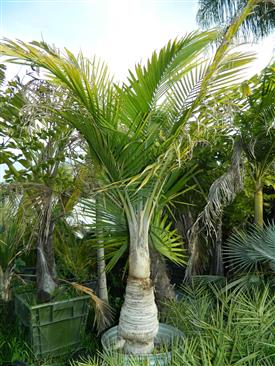
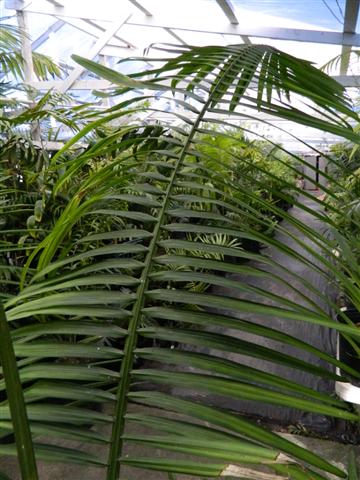

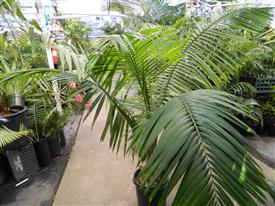
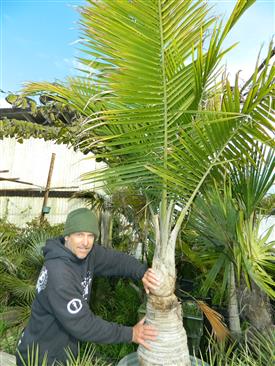
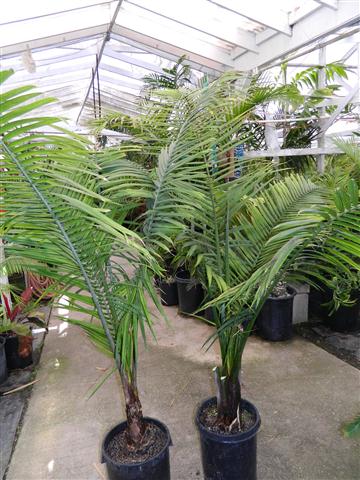
- PALM TREES, CYCADS & TROPICAL PLANT BLOG - October 1, 2020
- TRACHYCARPUS
The Windmill Palm - September 30, 2020 - FAN PALMS –
PALMS WITH CIRCULAR LEAVES - September 29, 2020












